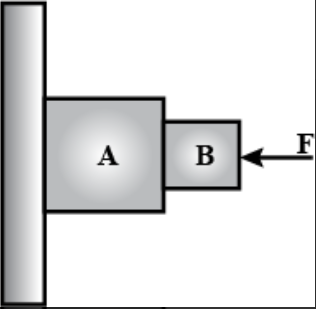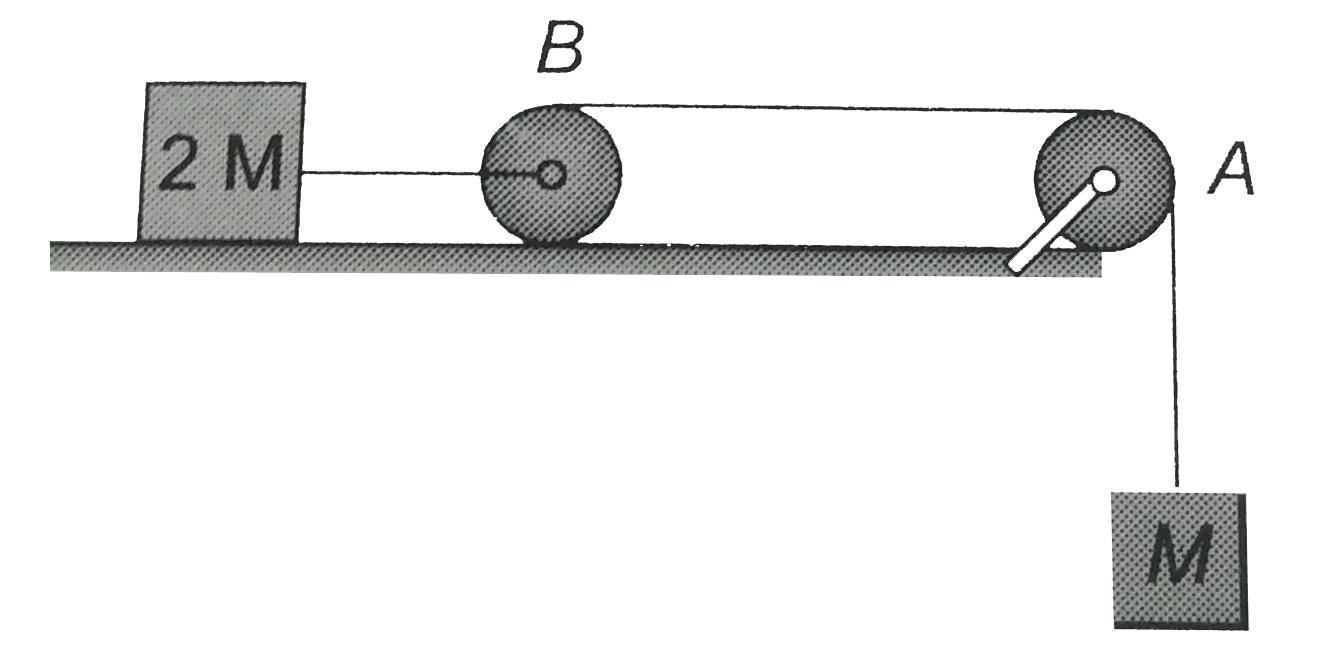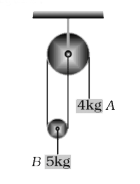Consider the situation shown in figure. The wall and the surface of A and B in contact are rough. The friction on A due to .

B is upward
wall is downward
wall is zero
B is downward.
The correct Answer is:4
Step by step video & image solution for Consider the situation shown in figure. The wall and the surface of A and B in contact are rough. The friction on A due to . by Physics experts to help you in doubts & scoring excellent marks in Class 12 exams.
Updated on:21/07/2023Similar Questions
Consider the situation shown in figure. The wall is smooth but the surfces of A and B in contact are rough. The friction on B due to A in equilibrium.

(a) is upward
(b) is downward
(c) is zero
(d) the system cannot remain in equilibrium
View SolutionConsider the situation shown in the figure. The wall is smooth but the surface of blocks A and B in contact are rough. The friction of B due to A in equilibrium

View Solution
Knowledge Check
Consider the situation shown in the figure. The wall is smooth but the surfaces of A and B in contact are rough. Then,
 Asystem may remain in equilibriumBboth bodies must move togetherCthe system cannot remain in equilibriumDNone of the above
Asystem may remain in equilibriumBboth bodies must move togetherCthe system cannot remain in equilibriumDNone of the aboveConsider the situation as shown in the firgure.
 AThe accelaration of M is 2g/3.BThe tension in the string connecting A and B is Mg/3CThe reaction on pulley A is √2 Mg/3 at an angle 45∘ with the horizontal.DAll the options are correct.
AThe accelaration of M is 2g/3.BThe tension in the string connecting A and B is Mg/3CThe reaction on pulley A is √2 Mg/3 at an angle 45∘ with the horizontal.DAll the options are correct.Consider the system shown in the figure. The wall is smmoth, but the surfaces of blocks A and B in contact are rough. The friction on B due to A in equilibrium is
 AupwardBdownwardCnot definedDthe system cannot remain in equilibrium.
AupwardBdownwardCnot definedDthe system cannot remain in equilibrium.
Consider the situation as shown in the figure. Locate the center of mass.

View SolutionConsider the system as shown. The wall is smooth, but the surface of block A & B in contact is rough. The friction force on B due to A equilibrium is :

View SolutionConsider the situation shown in the figure.

Find acceleration of B.
View SolutionConsider the situation shown in the figure.

Find acceleration of A.
View SolutionConsider the situation as shown in the figure. Choose the correct option.

View Solution
